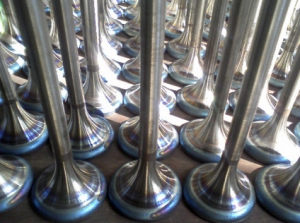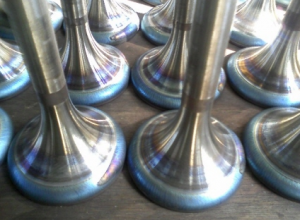Do you think plasma cladding technology for automotive and marine applications is overhyped? Or is it moving the industry forward and making the progress it deserves?
Automotive and marine are very different from what we knew hundreds of years ago. If you were in the industry a decade or two ago, you wouldn't believe we could do what we do today. So, in this article, we'll cover some of the real-world effects of plasma cladding on automotive and marine engines.
We will discuss the damage encountered with valves in automotive and marine engines and how plasma fusion cladding deals with that damage, among other things!
What's a valve?
Valve is a very important component of an internal combustion engine (e.g. automobile engine), which is mainly used to control the flow of gases in and out of the cylinder. Valves are categorized into intake and exhaust valves, which are responsible for controlling the flow of air or gas mixture into the cylinder and the flow of exhaust gases out of the cylinder, respectively.
Role of valves

1.Intake Valve:
• When the intake valve opens, air or fuel mixture (in gasoline engines) is drawn into the cylinder. When the intake valves are closed, the air or fuel in the cylinder is compressed and ready for ignition.
2.Exhaust Valve:
• When the exhaust valve is open, the combusted exhaust gases are expelled from the cylinder. When the exhaust valve is closed, the compression and combustion processes in the cylinder can take place in a closed environment.
How the valves work?
The opening and closing of the valves is controlled by the camshaft (Camshaft). A cam on the camshaft pushes the valve stem through a rotating motion, causing the valve to open or close. This process is synchronized with the engine's operating cycle to ensure that the cylinders take in air or fuel and expel exhaust gases at the correct time.
Common problems with valves
1.Wear and tear:
• After prolonged use, valves may wear out due to frequent opening and closing motions and high-temperature environments, resulting in poor valve seals.
2.Ablation:
• Under high temperature and pressure, valves may suffer from ablation, affecting valve sealing and durability.
3.Carbon buildup:
• Carbon deposits may build up on the surfaces of intake and exhaust valves, interfering with proper valve operation.
Importance of cladding technology for valves

Traditional repair techniques such as flame spraying and arc spraying have limitations when cladding valves. While these methods are effective for less critical components, they often fail to produce highly accurate parts.
While plating and spraying can prevent distortion exponentially, they are not the best choice for high-speed or heavy-duty applications. Why? This is because they have limited repair thickness and insufficient bonding. Cladding and welding can lead to severe distortion.
However, with plasma cladding, a metallurgical bond is formed between the fusion cladding and the substrate, with high bond strength and a coating that is less likely to flake off, providing a high-performance, cost-effective alternative for engine valve repairs.
Through this method, surface qualities can be improved, including heat, abrasion and corrosion resistance, without sacrificing the structural integrity of the underlying material.
Get world-class plasma cladding services from ShanghaiDuomu!
At Shanghaiduomu, we are more than happy to help you with any plasma cladding service or application you need. With over 10 years of experience in plasma solutions, you can rely on us for whatever plasma application you are looking for!
In addition to our expertise in plasma cladding, we are also China's top supplier of cladding accessories and equipment, welding and more!
Our plasma cladding solutions will be the last thing you need! Contact us today for a free estimate on any of the services you need! Get world-class customer service and assistance from our experienced team of agents and operators!
Post time: Aug-21-2024